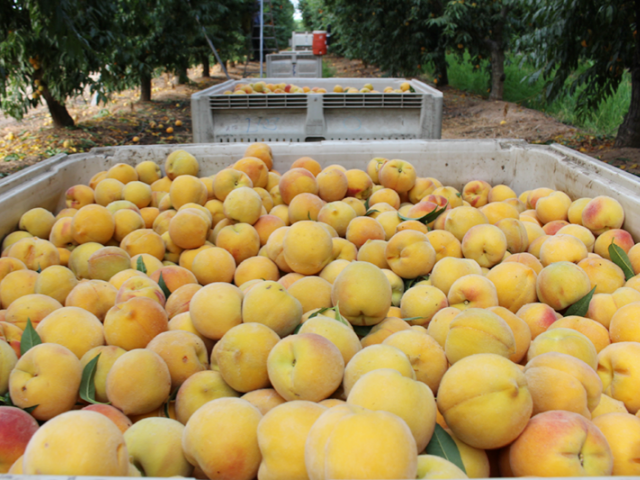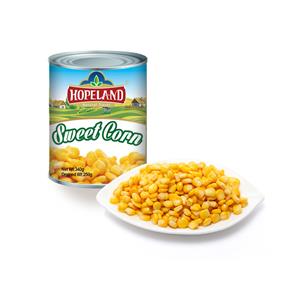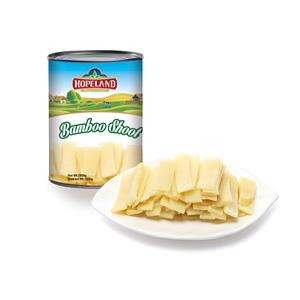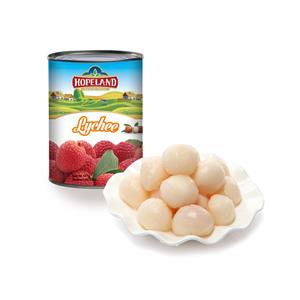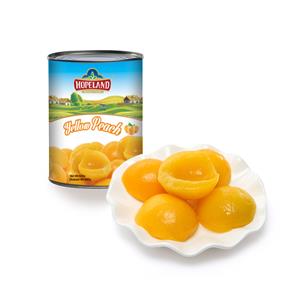August 20, 2025: Summary of Yellow Peach Harvest Season and Market Prices
As we approach the closing stages of the 2025 yellow peach harvest season, growers, traders, and processing factories are all closely monitoring price fluctuations across different regions and varieties. August is always a crucial month for the peach industry in China, particularly for yellow peaches destined for both fresh consumption and processing into canned products. On August 20, 2025, the market situation provides a clear picture of where the season currently stands and what trends can be anticipated in the final days of harvesting.
This report summarizes the current procurement prices of the major varieties of yellow peaches, their primary growing regions, and the progression of their harvest cycles. The varieties under review include Golden Queen (金皇后), South Africa No. 2 (南非2号), Yellow-in-Yellow (黄中黄), Golden Child No. 9 (金童九号), and Qianba (钱八). Each of these cultivars has its own planting distribution, harvesting schedule, and price trend, all of which are significant for farmers, wholesalers, and factories engaged in the canned fruit industry.
1. Golden Queen (金皇后)
The Golden Queen variety has been one of the most widely cultivated and recognized yellow peach varieties in northern China for many years. Known for its large size, bright golden color, and relatively stable quality, it is highly suitable for both fresh markets and processing.
Current Procurement Price (as of August 20, 2025): 1.3–1.4 RMB per jin
Main Producing Areas: Yishui (Linyi, Shandong), Rizhao (Shandong), and Lianyungang (Jiangsu). The border region between Lianyungang and Linyi has particularly extensive plantations.
By mid-to-late August, Golden Queen peaches have already entered the latter stage of their harvest season. Most orchards have been picked at least once or twice, with only the late-maturing fruits still on the trees. It is expected that harvesting will continue for about one more week before production tapers off significantly.
Market Analysis:
The stable price range of 1.3–1.4 RMB per jin reflects balanced supply and demand. Although some orchards are experiencing reduced yields due to earlier weather fluctuations, the relatively large planting area of this variety ensures consistent availability. For canning factories, Golden Queen peaches are an important raw material thanks to their firmness, sweetness, and resistance to heat processing.
2. South Africa No. 2 (南非2号)
Among all current varieties, South Africa No. 2 has attracted particular attention this season. This variety, introduced years ago and now widely adopted in several regions, is valued for its firm flesh, uniform size, and high sugar-acid balance, making it especially well-suited for canned yellow peach production.
Current Procurement Price (as of August 20, 2025): 1.5–1.7 RMB per jin
Main Producing Areas: Yishui and Junan (Shandong), Ganyu (Jiangsu), and the border areas of Lianyungang and Linyi where large-scale orchards are concentrated. Additional planting can be found in Heze and Zaozhuang (Shandong), though price information from those areas has not yet been fully reported.
South Africa No. 2 is just entering its peak harvest stage. Unlike Golden Queen, which is in its later phase, this variety still has significant quantities available for procurement. Its ripening period generally extends into late August and even early September in certain regions.
Market Analysis:
The relatively higher price range of 1.5–1.7 RMB per jin demonstrates the strong market preference for this variety. Canning factories are particularly eager to purchase South Africa No. 2, and the demand has been strong enough to support a premium over other varieties. For growers, this has been a favorable year, as the combination of quality fruit and factory demand translates to stable income. For traders, the extended harvest window ensures that procurement activities will continue actively for several weeks.
3. Yellow-in-Yellow (黄中黄)
Yellow-in-Yellow is another traditional yellow peach variety that has maintained a stable presence in several northern regions. This cultivar is typically less prominent in the processing sector but maintains steady demand in the fresh fruit market.
Current Procurement Price (as of August 20, 2025): 1.2–1.4 RMB per jin
Main Producing Areas: Zibo and Linyi (Shandong).
By late August, Yellow-in-Yellow has reached the very end of its harvest cycle. The majority of orchards have already completed their main picking rounds, and remaining fruits are largely directed toward processing channels rather than fresh consumption.
Market Analysis:
The price range of 1.2–1.4 RMB per jin shows that the variety still retains some value, but compared with South Africa No. 2, its market appeal is weaker. The softer texture and slightly less uniform fruit size make it less desirable for canning, although it remains a supplementary raw material for factories in need of additional volume. For growers, the end-of-season sales are more about clearing orchards than maximizing profit.
4. Golden Child No. 9 (金童九号)
Golden Child No. 9 is an important yellow peach variety grown primarily in Hebei province. Compared with Shandong’s major varieties, it enters the market later in the season, offering an extended supply period that complements earlier-maturing cultivars.
Current Procurement Price (as of August 20, 2025): 1.1–1.3 RMB per jin
Main Producing Area: Shenzhou (Hengshui, Hebei).
This variety has just begun its harvest period, meaning supply is still relatively limited but will increase steadily in the coming weeks. Its delayed ripening is strategically advantageous, as it enters the market when other varieties are winding down.
Market Analysis:
Although the price of 1.1–1.3 RMB per jin is lower than that of South Africa No. 2 or Golden Queen, the outlook is stable. Processing plants often rely on Golden Child No. 9 to maintain steady production capacity after Shandong’s main harvest concludes. If weather conditions remain favorable, its role in prolonging the canning season will be particularly significant this year.
5. Qianba (钱八)
Qianba is primarily cultivated in the northeastern coastal region of Dalian. Compared with the larger-scale varieties in Shandong, it occupies a smaller share of the national market but still plays a role in meeting local demand and supplementing raw material supplies.
Procurement Price (August 19, 2025): 1.0–1.1 RMB per jin
Procurement Price (August 20, 2025): Below 1.0 RMB per jin
Main Producing Area: Dalian (Liaoning).
Within just one day, prices dropped below 1 RMB per jin, which is a notable decline. This fluctuation is likely influenced by weather conditions, which can affect both harvest quality and transportation efficiency. Qianba’s harvest period is short, lasting only about one more week.
Market Analysis:
The drop below 1 RMB per jin indicates weak market demand and limited processing interest. Because this variety is smaller in scale and less competitive in quality compared to South Africa No. 2 or Golden Queen, it often faces price pressure during the late season. For growers, this rapid decline is challenging, and many may need to accelerate harvest and sales to avoid further losses.
Overall Market Trends
As of August 20, 2025, the yellow peach market in China presents a mixed picture:
Golden Queen is nearing the end of its season, with stable prices around 1.3–1.4 RMB per jin.
South Africa No. 2 is entering its prime harvest window and enjoys the strongest demand from factories, with prices holding between 1.5–1.7 RMB per jin.
Yellow-in-Yellow is in its final phase, priced at 1.2–1.4 RMB per jin, largely going to processing channels.
Golden Child No. 9 has just started harvesting in Hebei, providing continued supply with prices at 1.1–1.3 RMB per jin.
Qianba is facing price declines below 1 RMB per jin in Dalian, influenced by weather and weaker demand.
From a broader perspective, the market is clearly segmented by variety and region. Factories have been showing strong preferences for specific cultivars such as South Africa No. 2, while growers of lesser-known varieties face greater market risks. Weather remains an unpredictable factor, influencing both harvest quality and short-term price fluctuations.
Implications for Growers, Traders, and Factories
For Growers: Timing is crucial. Those harvesting Golden Queen and Yellow-in-Yellow should accelerate picking and sales as the season ends. Growers of South Africa No. 2 are in a favorable position to benefit from strong demand and higher prices.
For Traders: Market awareness and logistics coordination are essential. Identifying which regions still have available fruit and aligning with factory demand will determine profitability.
For Factories: Securing stable raw material supply is the top priority. As Golden Queen tapers off, reliance will shift to South Africa No. 2 and Golden Child No. 9. Managing procurement channels now will ensure continuous production through September.
Conclusion
The 2025 yellow peach harvest season is moving into its final stages, with most early and mid-season varieties nearly completed. South Africa No. 2 stands out as the variety with the strongest market performance, supported by both quality and processing demand. Other varieties, while still contributing to overall supply, are either concluding their harvests or facing weaker price trends.
Looking ahead, weather conditions in the final weeks of August and early September will play a key role in determining harvest efficiency and price stability. For the industry as a whole, this year underscores the importance of variety selection, regional diversification, and adaptive market strategies.

